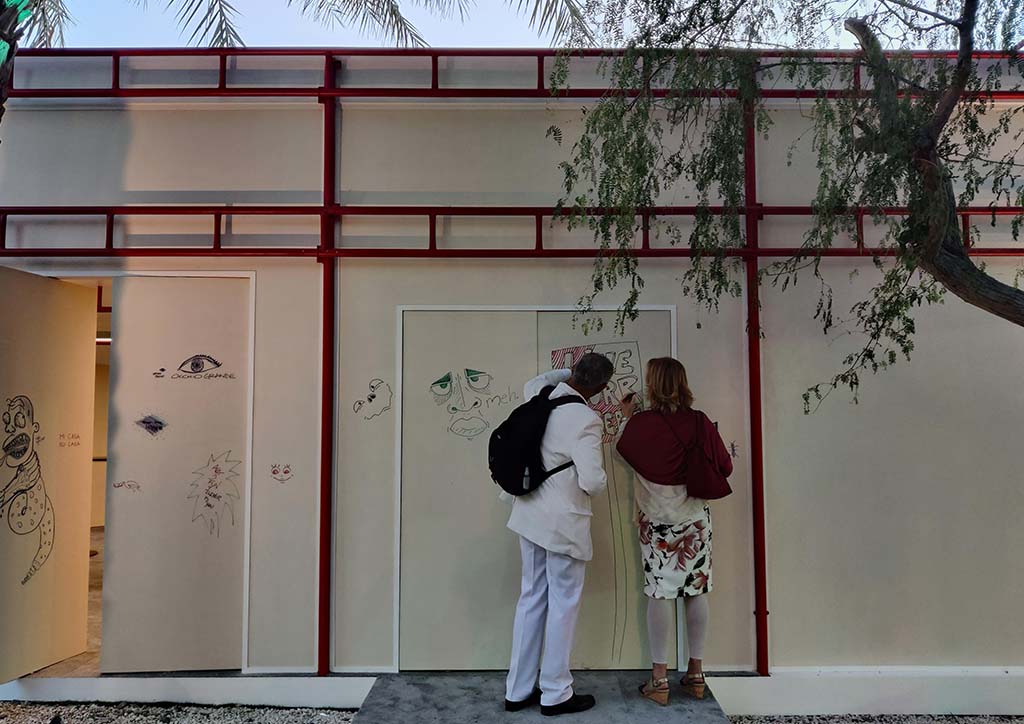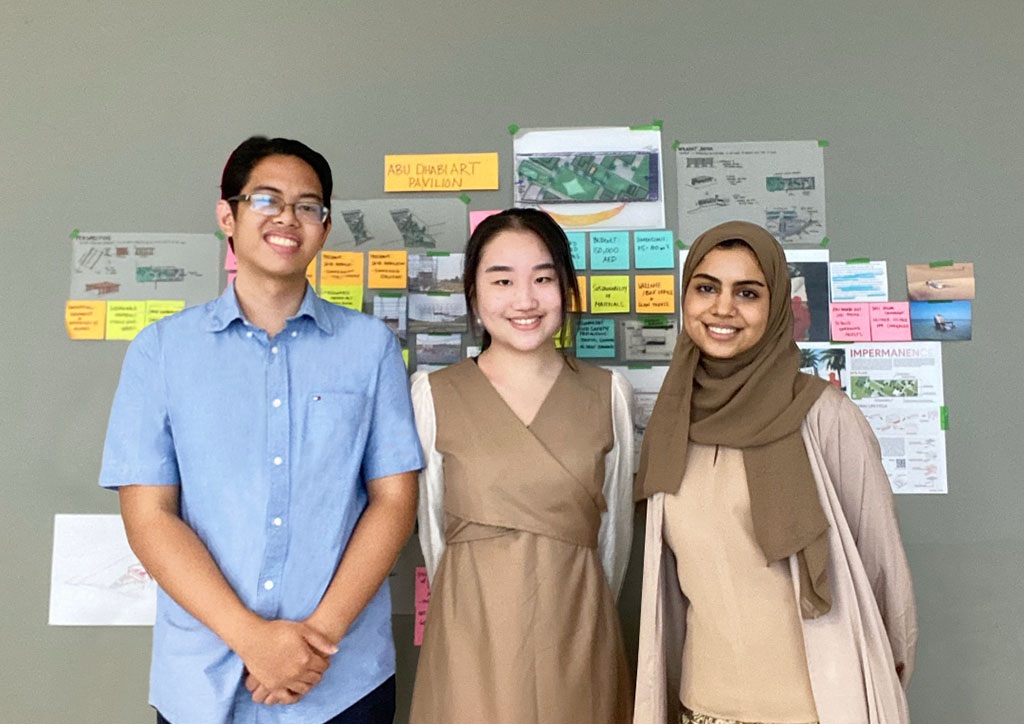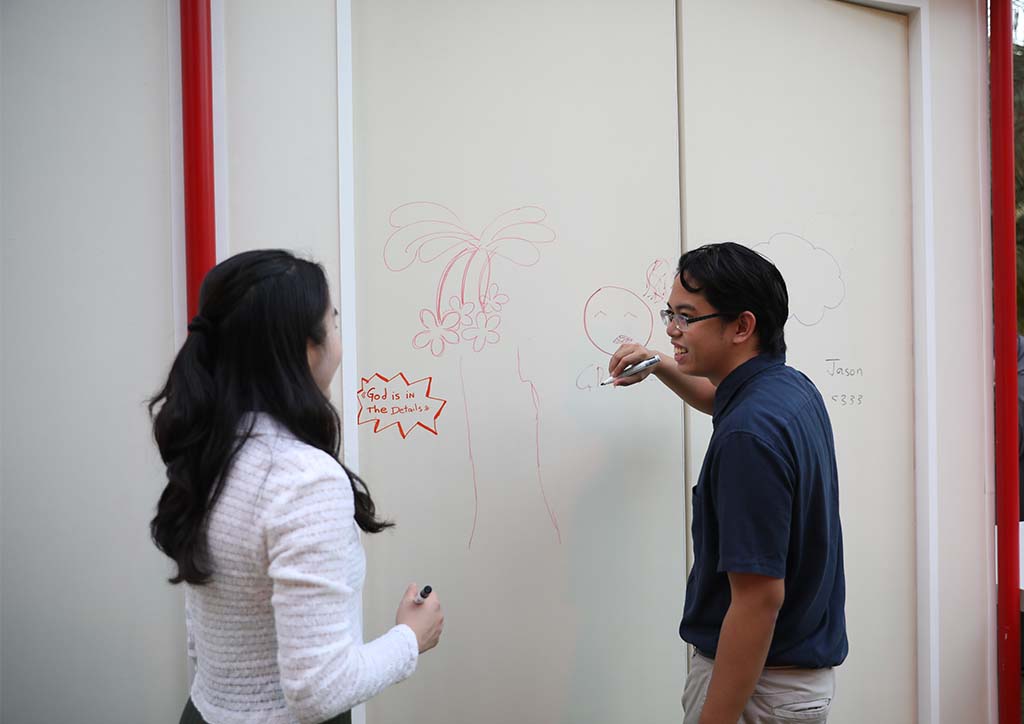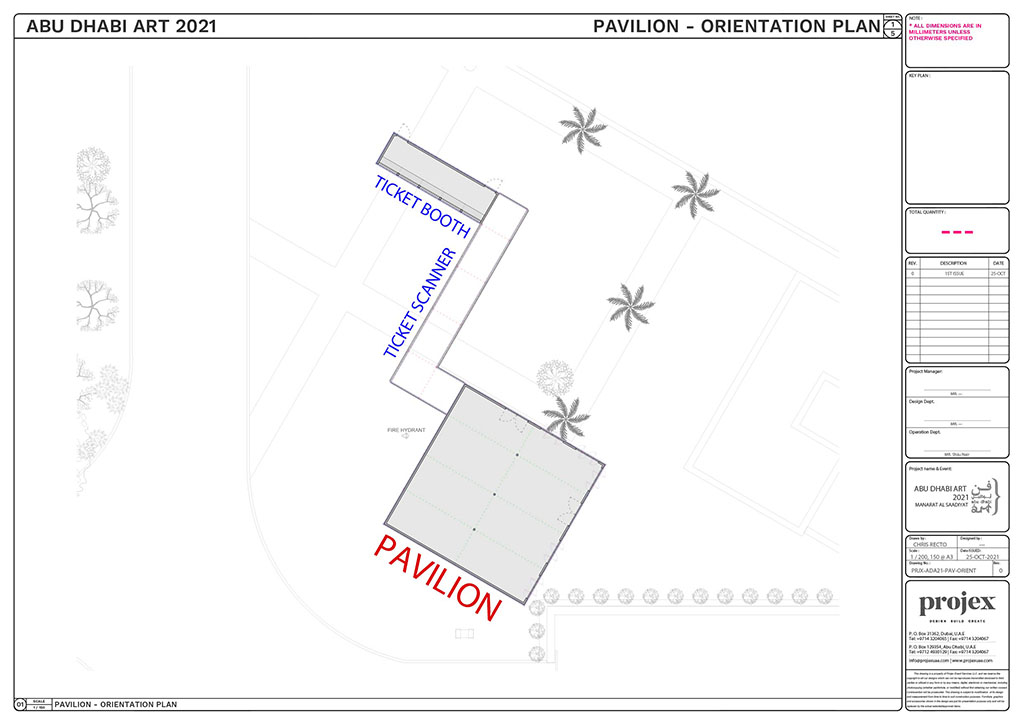
Abu Dhabi Art Pavilion: Rethinking Impermanence in Architecture
For the majority of the designers and users of buildings, architecture has always been tied to the attribute of permanence. The architect is eager to make his mark upon the city’s skyline; the homeowner wishes to commission a house that will stand for generations of heirs to come. Quality of design and materials have long been synonymous with the structure’s rigidity and imperturbability. Most of us feel that a structure must be permanent in order to have a lasting impact.
On the other hand, few things are as engaging, energy-intensive, and ephemeral as fairs and festivals; yet, the impact of these type of events are clearly in effect long afterwards, for both the individual and society. One of these is the Abu Dhabi Art fair, a lively annual event that gathers works from all over the world to celebrate the arts and culture sector. “Abu Dhabi Art opened with a near-record number of 49 galleries presenting exceptional booths, which speaks to the thriving art community in the UAE,” says the fair’s director, Dyala Nusseibeh.
For this year’s edition, which took place last November, the entrance pavilion was designed by New York University Abu Dhabi student Jason Cruz together with teammates Jennifer Tsai, and Roudhah Hamad Al Mazrouei. The proposal is chosen from entries to the Pavilion Prize, an architectural competition for UAE students. Although coming from a design background rather than an architectural one, their university’s curriculum and faculty’s support enabled the team members to explore their fields of interest freely. As a result, their collaboration yielded a fresh, new approach to the competition’s theme: sustainability in architecture, with an emphasis on environmentally friendly construction.
The resulting design is a pop-up structure named “Impermanence”. The concept is based on the central philosophy that a sustainable temporary structure is one that can be fully dismantled and repurposed after use, eliminating material waste. The main structural components are scaffolding and canvas, materials which are readily recyclable without much additional processing, and are frequently in demand for construction work. The team states: “These materials are a common sight in the UAE; they symbolize progress, but also have underlying connotations of incompleteness. Our use in the project challenges this negative connotation.”
For Jason Cruz, who is taking a Civil Engineering course, the project showcases the creativity and flexibility that defines the Filipinos striving to make their mark on the international stage. Circumstances necessitate thoughtful solutions and a willingness to utilize available resources. “For the longest time, I knew I wanted to be an architect,” Jason shares. “Although NYUAD doesn’t have an architecture major, I’ve found opportunities to express my creativity and passion for design through my classes and extracurriculars.”
Other temporary structures, such as the WTA Architecture and Design Studio’s COVID-19 Emergency Quarantine Facility (EQF) design, have presented a glimpse of the possibilities of modular and portable architecture. With the majority of the world’s population living in urban centers, and constantly on the move, the social landscape is continually changing. It makes sense for architecture to be able to change with it. Given the advancing technologies on our hands, including the ability to share techniques and work with other professionals remotely, the dream of a structurally sound yet temporary building might be on the horizon.
For now, Jason Cruz prides himself on a dream come true. “The process for this proposal has been an invaluable experience,” he says. “I am truly humbled and honoured to have this opportunity and to have worked with the team and our professors to realize this extraordinary project.”







